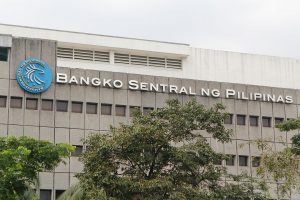
Banks’ real estate sector exposure declines in Q1
THE EXPOSURE of Philippine banks and trust entities to the property sector went down year on year to 20.31% at end-March, data from the Bangko Sentral ng Pilipinas (BSP) showed.
This was lower than the 21.08% logged in the same period a year earlier but slightly higher than the 20.17% ratio at end-December 2023.
Investments and loans extended by Philippine banks to the real estate sector rose by 3.4% to P3.099 trillion as of March from P2.998 trillion a year earlier.
Real estate loans increased by 5.7% to P2.72 trillion in the period from P2.573 trillion at end-March 2023.
Broken down, residential real estate loans went up by 7.6% year on year to P1.022 trillion from P950.052 billion, while commercial real estate loans edged up by 4.6% to P1.698 trillion from P1.623 trillion.
BSP data showed past due real estate loans stood at P136.793 billion in the period, up by 2.3% from P133.699 billion a year prior.
Broken down, past due residential real estate loans slipped by 1.8% to P93.798 billion from P95.521 billion. On the other hand, past due commercial real estate loans jumped by 12.6% to P42.995 billion from P38.178 billion.
Gross nonperforming real estate loans went up by 5.3% to P110.787 billion as of March from P105.26 billion a year ago.
This brought the gross nonperforming real estate loan ratio to 4.07% at end-March, easing from 4.09% a year earlier.
Meanwhile, real estate investments in debt and equity securities declined by 10.8% year on year to P379.449 billion from P425.463 billion.
Elevated inflation and borrowing costs affected real estate loans and investments in the period, Rizal Commercial Banking Corp. Chief Economist Michael L. Ricafort said in a Viber message.
“Higher inflation and higher interest rates could have been headwinds to the real estate industry, as well as still relatively higher vacancy rates since the pandemic, partly due to hybrid and work-from-home arrangements since the pandemic,” he said.
Headline inflation averaged 3.3% in the first quarter.
The Monetary Board raised rates by a cumulative 450 basis points from May 2022 to October 2023 to help bring down elevated inflation. This brought the policy rate to 6.5%, the highest in over 17 years.
Mr. Ricafort also cited “relatively higher property prices in recent years,” which have led to banks being more prudent in lending to the real estate sector.
Separate data from the central bank showed that the Residential Real Estate Price Index rose by an annual 6.1% in the January-March period.
The BSP monitors lenders’ exposure to the real estate industry as part of its mandate to maintain financial stability.
In 2020, the central bank raised the real estate loan limit of banks to 25% of their total loan portfolio from 20% previously to help free up additional liquidity as a relief measure during the coronavirus pandemic. — Luisa Maria Jacinta C. Jocson



